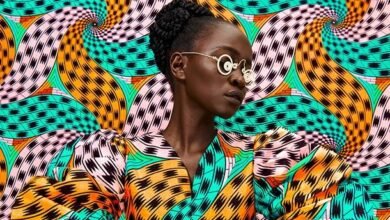Lantoniaina Malala Rakotoarivelo reconciles fight against poverty and environment
Lantoniaina Malala Rakotorivelo, founder of Art Lanto Design, uses seagrass to create top-quality Madagascan basketry. It's an environmentally friendly solution that provides an income for the poorest of the poor. The company is now looking to expand internationally.

By Mérième Alaoui
With a smile on her face, the director of Art Lanto Design describes her ambitions: « We target hotels, restaurants and high-end decoration shops looking for eco-friendly, handmade and sophisticated products. » She set up her business in 2017 in Tuléar, in the south of Madagascar, and quickly understood her priorities. The region, known for its white sands, is also plagued by unemployment and poverty. « It is very difficult for young graduates to find a job here. But the situation is even worse for non-graduates, especially women. One of our company’s objectives is to give priority to employing this disadvantaged population. We have trained about thirty people to make our products, » says Lantoniaina Malala Rakotorivelo. Traditional basketry is well known in Madagascar, but it was necessary to master a particular weaving technique, the more elegant « rolled » model. « We trained ourselves by watching instructional educational videos on Youtube. We adopted the weaving technique of the Chinese, whose products are flooding the market.”
A social enterprise serving the environment

In addition to its social impact, the company also has an environmental vocation. While wickerwork, with its ethnic and authentic feel, appeals to decorating enthusiasts around the world, the founder of Art Lanto Design came up with the idea of using seagrass. « It is an invasive plant, a grass that grows in swamps and salt marshes. It’s a plant that no one takes care of, » explains Lantoniaina Malala Rakotorivelo. Aesthetic and original, picking and treating it helps to limit the overexploitation of marine and terrestrial protected areas threatened by man. « To meet their needs, the poor communities of south-western Madagascar fish, cut wood and burn charcoal illegally in these areas. They use and overexploit resources that are protected by law. Little do they know that seagrass can also create wealth. Seagrass has the same properties as wicker, which is commonly used to make baskets. It is biodegradable and produces no waste or chemical pollution.
This ecological and economic vision is in the entrepreneur’s DNA. It has to be said that, in addition to her social business, she works as a civil servant, head of the sustainable development department at the Regional Directorate for the Environment and Sustainable Development. Her day-to-day role is to provide the best possible advice to NGOs and other environmental actors on their projects. « My business is a way of putting into practice what I advise and advocate at work. I am convinced that protecting natural resources is not enough. It must be accompanied by activities that create jobs and income for people. Like the cultivation and use of seagrass!”
We will make the business sustainable by cultivating the raw materials ourselves

Launched with a $10,000 grant as part of a government program to encourage innovative startups, the small business is holding its own and has no shortage of ambition. While its products are already sold to international wholesalers, the aim now is to add the Toliara Handicraft brand to gain international recognition. « By the end of the year, we’ll make the business sustainable by cultivating our own raw materials. Our business model is inspired by the Chinese, who cultivate whole fields of seagrass right next to their weaving workshops. The whole thing looks like a kind of factory that employs a lot of people, » explains Lantoniaina Malala Rakotorivelo. Before being a small production unit, Art Lanto Design is above all an idea, a local vision that combines ecology and social integration. It is a tailor-made model that Lantoniaina Malala Rakotorivelo intends to defend and spread throughout the African continent.





